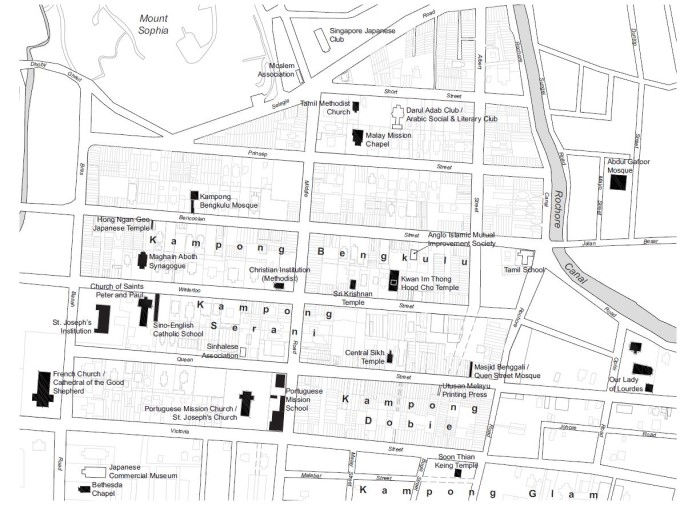Singapore Kampong Dhoby
- Marc Michelmann
- Sep 29
- 2 min read
Within the vicinity of Kampong Bengkulu, near Kampong Serani was Kampong Dhoby (also spelt ‘Dobie’ and ‘Dobi’) at the upper end of Queen Street. This was a neighbourhood inhabited by a North Indian community. In Tamil, this area was known as Dobi Kampam, kampam being a transliteration of the Malay ‘kampong’. Maps from 1842 – 45 indicate that Kampong Dhoby had existed by then, while a newspaper notice from 19 May 1842 mentions a “Campong Dhoby”.

Kampong Dhoby owes its origins to the location of the Indian military cantonment here in the 1820s as well as the section of the Rochor River where Indian washermen, or dhobies, washed and dried their laundry. The soldiers at the cantonment were recruited from Bengal and brought to Singapore to maintain law and order. The cantonment in the vicinity of Short Street existed for about six years before it shifted to Outram Road. It was described as a “large exercising ground… roughly bounded by Prinsep St., Albert St., Queen St., and Bras Basah”. However, even after the relocation of the cantonment, the Indian presence remained, leading to the formation of Kampong Dhoby.

St. Joseph's Church, 143 Victoria Street

St. Joseph's Church, 143 Victoria Street
In 1906, Masjid Kampong Bengkulu became known as Masjid Hanafi, following a change in the mosque’s trusteeship to Hanafi adherents of the Muslim faith. Just two years later, another Hanafi mosque was established in 1908 — Queen Street Hanafi Mosque, which was commonly known as Masjid Benggali. These developments attest to the shifting demographics of Kampong Bengkulu and its growing number of Indian Muslims, many of whom subscribed to the Hanafi school.

Parochial House, No 143 Victoria Street.
Besides the two mosques, the kampong was also home to one of the earliest Sikh temples in Singapore, the predecessor of today’s Central Sikh Temple on Towner Road. This Sikh temple (gurdwara) was first set up in 1912 in a house at 175 Queen Street, which had been acquired by a group of Sikhs led by a Sindhi merchant named Wassiamull. The gurdwara represented the Sikh community’s early attempt at self-organisation, and the site soon became a centre for Sikh social life. The confluence of activities at the temple earned it the name Wadda Gurdwara, or Big Temple. In 1920–21, the building was converted into the Central Sikh Temple, and remained here until 1977 when the land it sat on was acquired by the government.
Another major landmark in this area was the first office and printing press of the Utusan Melayu newspaper, which published its maiden issue in 1939. The pioneer Malay-language press occupied a three-storey shophouse on Queen Street. However, the premises were destroyed during the Japanese Occupation, and the press subsequently reopened on Cecil Street.
Source: https://www.roots.gov.sg/stories-landing/stories/forgotten-histories, September 2025




Comments